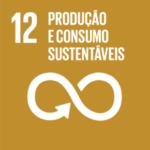
Do you know how much CO2 the publication of a book emits?
A White Book on the book sector’s carbon footprint was presented during the Book 2.0 event, the result of a pioneering study that shows some
We didn't find any happenings mapped to your criteria.
Try the traditional search to find articles not yet mapped with RUA.
We didn't find any happenings mapped to your criteria.
Try the traditional search to find articles not yet mapped with RUA.
We didn't find any happenings mapped to your criteria.
Try the traditional search to find articles not yet mapped with RUA.
We didn't find any happenings mapped to your criteria.
Try the traditional search to find articles not yet mapped with RUA.
Swiss startup Climeworks now has two units that suck carbon dioxide (CO2) from the atmosphere and turn it into stone. The aim is to increase its capacity to gigatonnes by 2050.
Swiss startup Climeworks recently opened its second plant that directly captures and stores carbon dioxide (CO2) on a large scale, in Iceland.
The new “Mammoth” plant is around ten times larger than its predecessor, “Orca”, which has been in service since September 2021, and both are located in the Hellisheiði geothermal park, half an hour from the capital Reykjavik.
When fully operational, Mammoth will suck up to 36,000 tons of CO2 from the surrounding air per year, using large fans that extract the air through a chemical process, powered by heat from the nearby ON Power geothermal plant: the air is sucked into a collector with filtering material inside which, once full, is closed; the temperature is increased to release the carbon dioxide from the material and then the highly concentrated gas is ready to be collected.
It is in the next phase that another Icelandic company comes into the equation: Carbfix, a storage partner. The company has found a way to mix CO2 with water and inject it 1,000 meters underground, where it reacts naturally with the basalt rock, turning it into stone in a process that takes around two years. Climeworks verifies and certifies the entire process by independent third parties.
“The start of operations at our Mammoth plant is another proof point in Climeworks’ journey to expand to megaton capacity by 2030 and gigaton capacity [mil milhões de toneladas] by 2050,” says co-founder and co-CEO Jan Wurzbacher, in a_statement.
A recent report by the International Energy Agency (IEA) estimated that – based on current oil and gas consumption – the world would need to capture or remove around 32 billion tons of carbon to keep global warming below 1.5ºC.
So far, around 10,000 tons of CO2 have been captured and then stored annually around the world, including 4,000 tons by the “Orca” plant and the rest mainly by experimental pilot units.
Although carbon capture and storage technology is recognized by the Intergovernmental Panel on Climate Change (IPCC) as a solution for removing CO2 from the atmosphere, experts warn that it cannot be considered an alternative to the rapid, large-scale emission reductions needed to avoid the worst impacts of climate change.
Apart from being a technology in its embryonic stage with limited public funding, its development is extremely costly. The marine conservation organization OceanCare claims that the Orca plant sequesters CO2 at a cost of more than 1000 dollars (929 euros) per ton.
Climeworks has not detailed the cost per ton of removal for the second plant, but says it is trying to reduce the cost of the technology to 400-600 dollars (around 450 euros) per ton by 2030.
OceanCare is still concerned about the large quantities of water required. If seawater is used – as Carbfix is allegedly testing – extraction could have a negative impact on ocean habitats.
In addition to Iceland, Climeworks is developing several megaton production centers in the United States (US), selected by the US Department of Energy for public funding. The startup is also developing projects in Norway, Kenya and Canada in order to make its technology effective.


A White Book on the book sector’s carbon footprint was presented during the Book 2.0 event, the result of a pioneering study that shows some

The researchers used an innovative artificial intelligence approach to measure the impact of 1,500 measures implemented by governments in 41 countries over two decades. Only

This article promotes an action that encourages the reduction of waste generation through prevention, reduction, recycling, and reuse.
➡️ To discover more businesses that are aligned with Sustainable Development Goal 12 “Sustainable Production and Consumption” click here.
➡️ For news, tips and interviews about this topic, click here.
➡️ Want to know more about the 17 United Nations Sustainable Development Goals? Click here
Esta publicação também está disponível em:
![]() Português (Portuguese (Portugal))
Português (Portuguese (Portugal))

